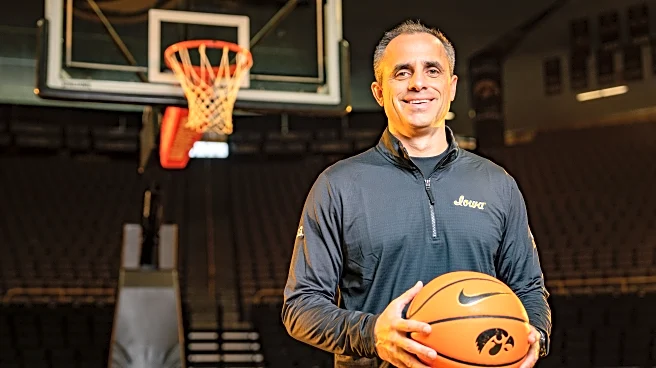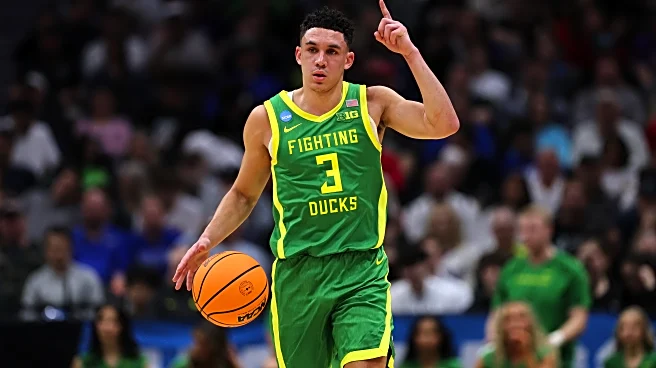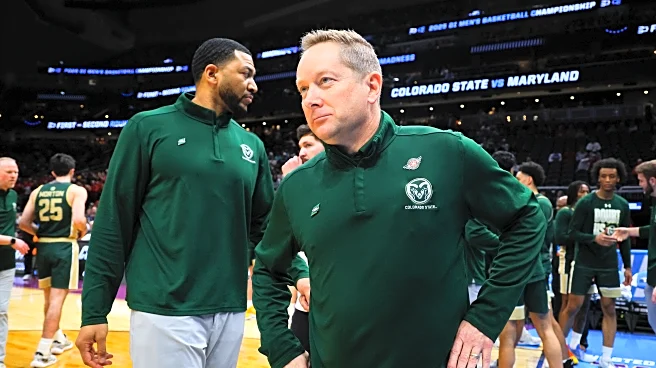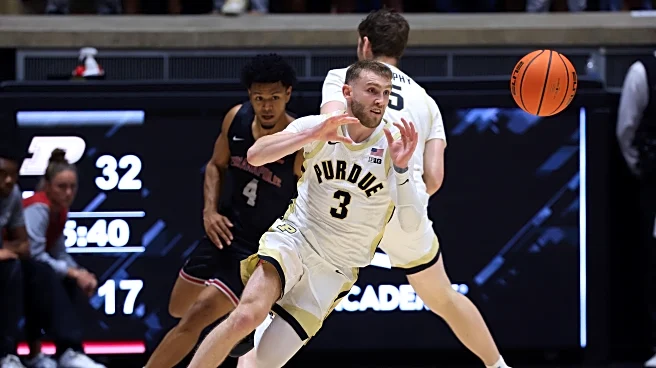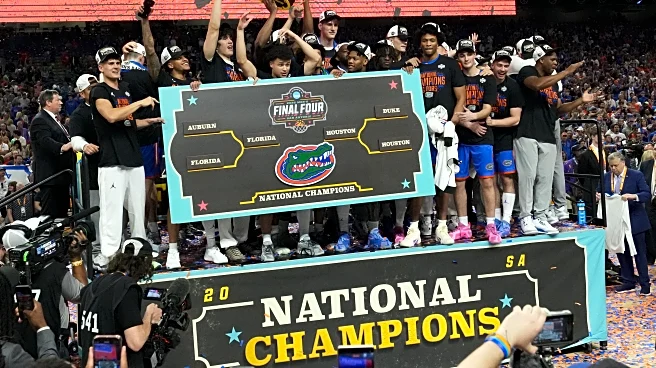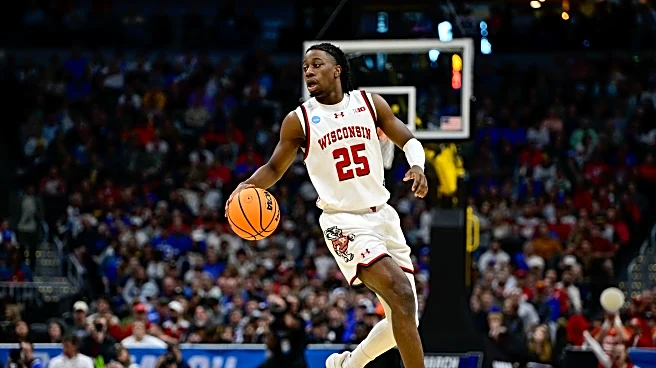What's Happening?
USC's men's and women's basketball teams are entering the new season with significant challenges due to injuries and roster changes. The men's team, led by coach Eric Musselman, is dealing with the absence
of five-star freshman Alijah Arenas, which has altered their expected trajectory. The team is searching for a reliable point guard and aims to improve its frontcourt with players like Gabe Dynes and Jacob Cofie. Meanwhile, the women's team, coached by Lindsay Gottlieb, faces the absence of JuJu Watkins due to a knee injury, requiring a collective effort to replace her production. Both teams are adjusting to new identities in the era of the transfer portal.
Why It's Important?
The challenges faced by USC's basketball teams highlight the broader impact of player injuries and roster changes in college sports. For the men's team, finding a new point guard and improving scoring capabilities are crucial for maintaining competitiveness. The women's team must adapt to significant losses in scoring and rebounding, which could affect their performance in the Big Ten. These developments underscore the importance of strategic adjustments and player development in collegiate athletics, influencing team dynamics and potential success in the season.
What's Next?
USC's basketball teams will need to navigate their respective challenges as the season progresses. The men's team will focus on integrating new players into key roles, while the women's team will explore strategies to compensate for the loss of JuJu Watkins. Both teams will aim to establish their identities and improve performance through non-conference games, setting the stage for their campaigns in the Big Ten. The outcomes of these adjustments will be pivotal in determining their success and competitiveness in the upcoming season.
Beyond the Headlines
The situation at USC reflects broader trends in college basketball, where teams frequently face roster changes due to injuries and the transfer portal. These dynamics can lead to shifts in team identity and strategy, impacting long-term development and recruitment. The ability to adapt and innovate in response to these challenges is crucial for maintaining a competitive edge and achieving success in collegiate sports.




